Abstract
1. Thyroxine and tri-iodothyronine are bound by liposomes (bimolecular phospholipid membranes produced by dispersing egg-yolk lecithin in water). At pH 7·4 the `partition coefficient' between water and the phospholipid is 1·2 × 104 for thyroxine and 2·2 × 104 for tri-iodothyronine. The partition coefficient falls off rapidly in more alkaline solutions as the phenolic group on the hormones becomes ionized.
2. The binding of thyroxine by membranes is very rapid, occurring at rates equivalent to those found in the binding of thyroxine by serum.
3. Lecithin membranes are readily permeable to thyroxine (the oil:water partition coefficient is 1·7).
4. The binding of thyroid hormones by perfused rat hearts and the binding of thyroid hormones by liposomes are similar in their sensitivity to pH. Simple alcoholic extracts of tissues have strong thyroxine-binding activity.
5. These results are discussed in relation to the nature and function of the tissue thyroxine-binding reaction.
Full text
PDF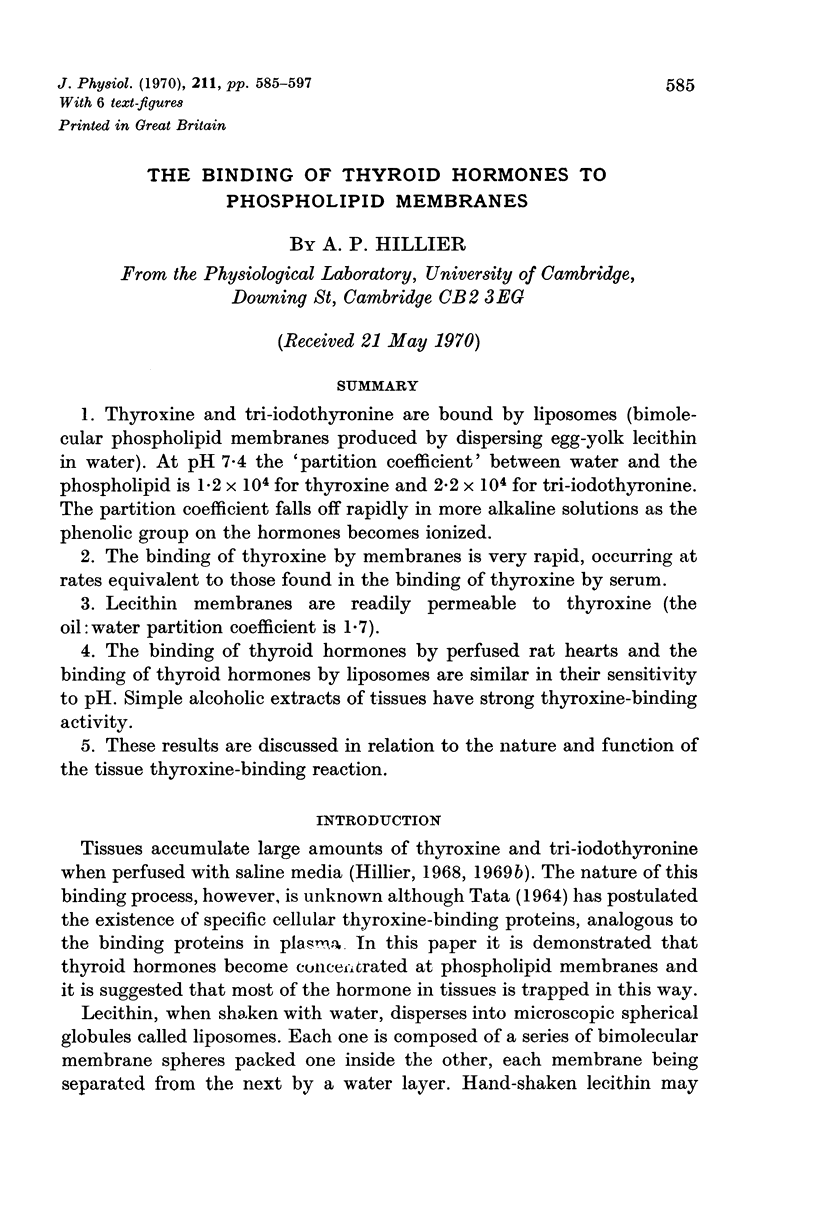
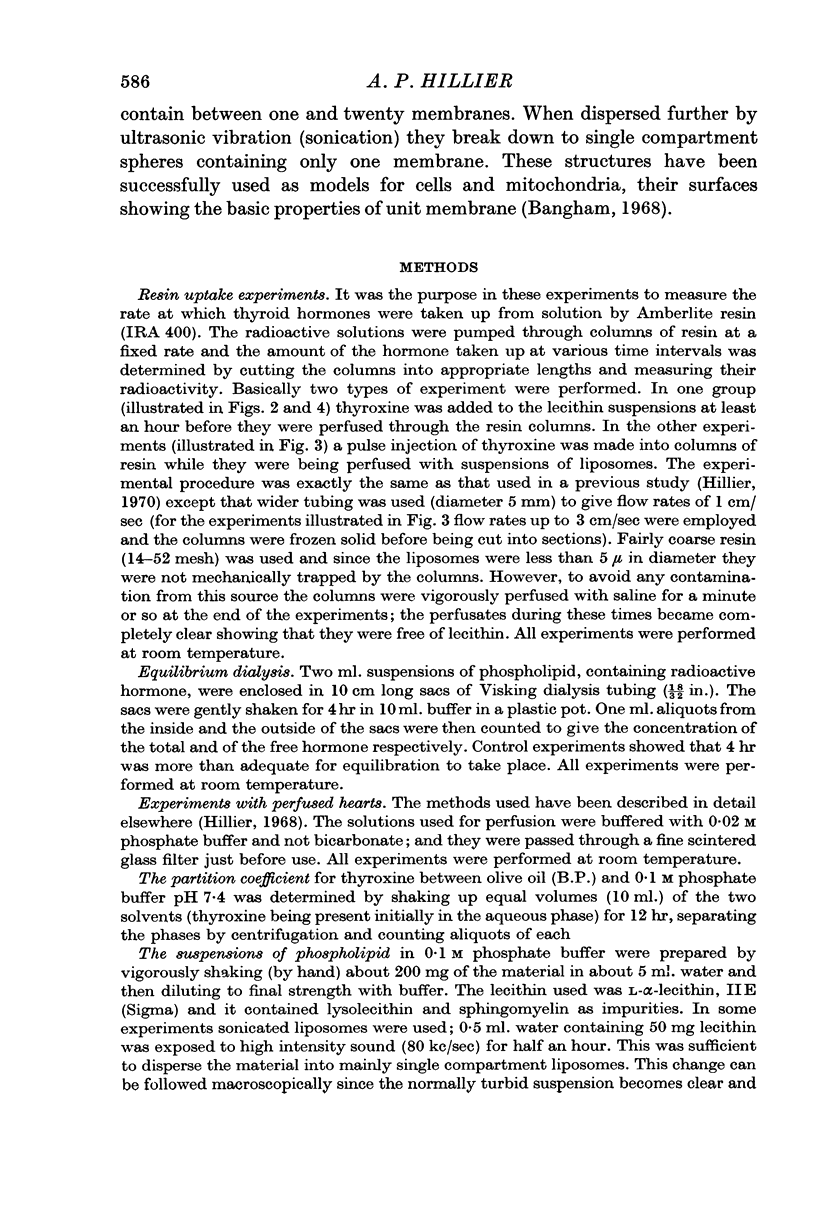

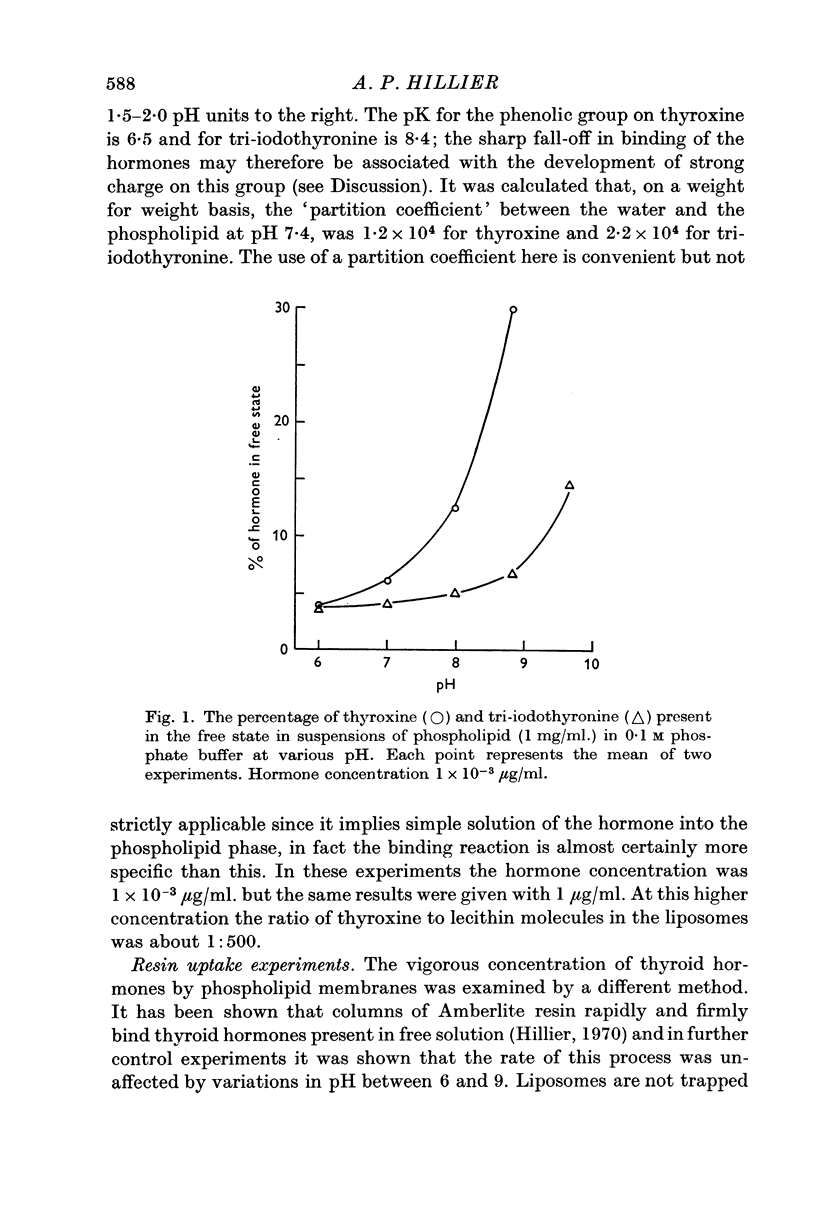
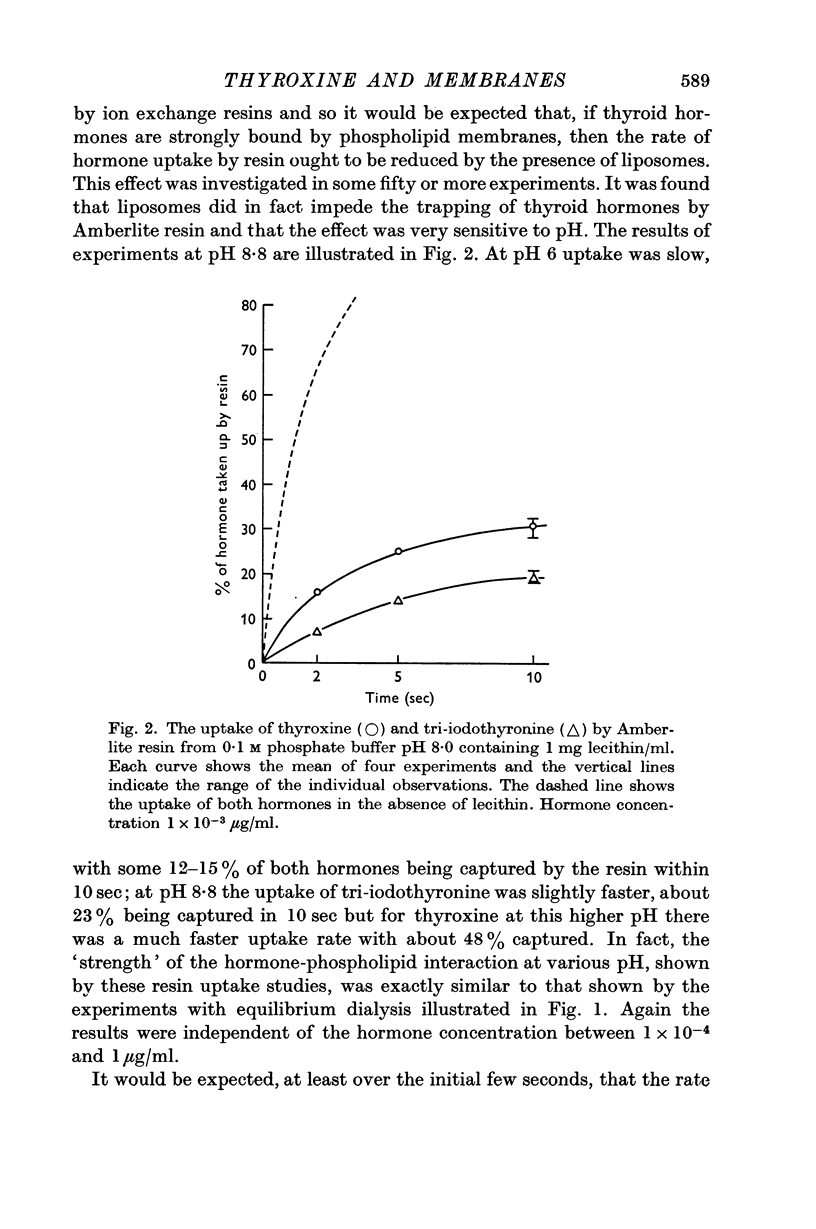
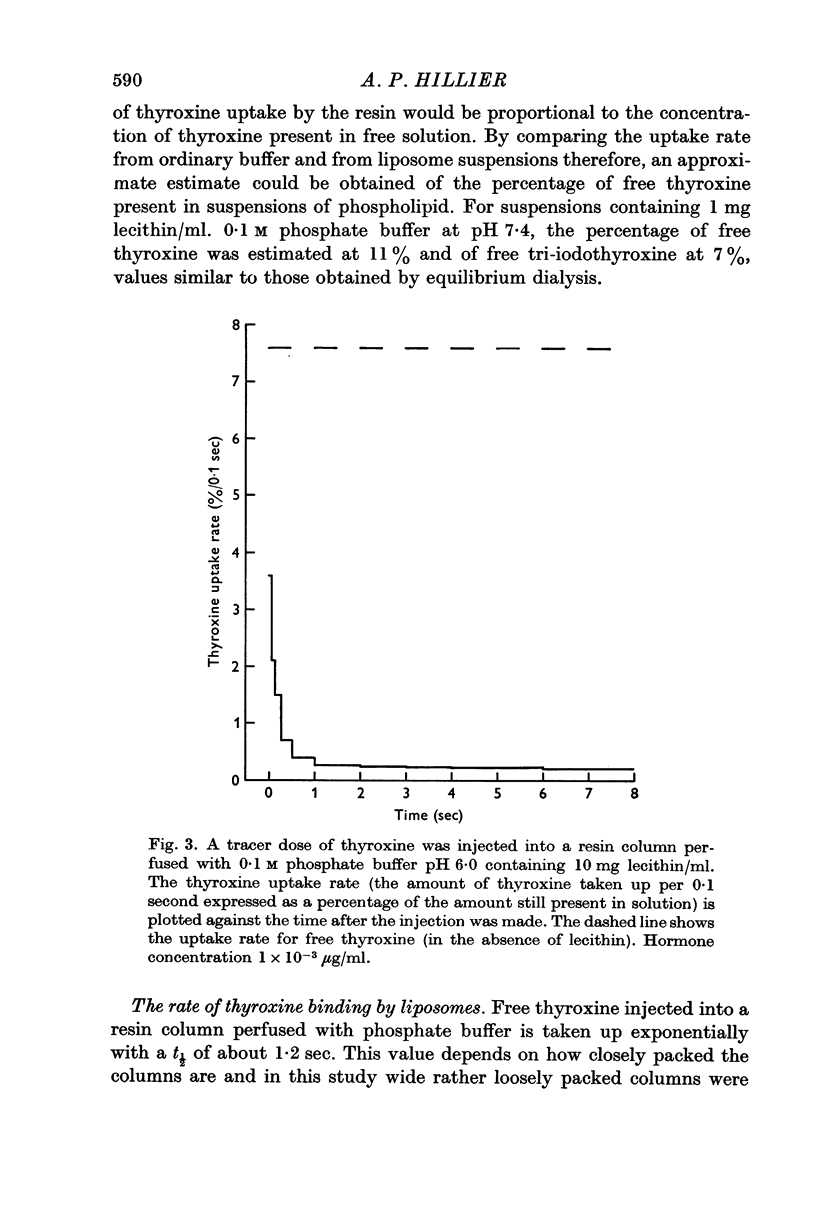
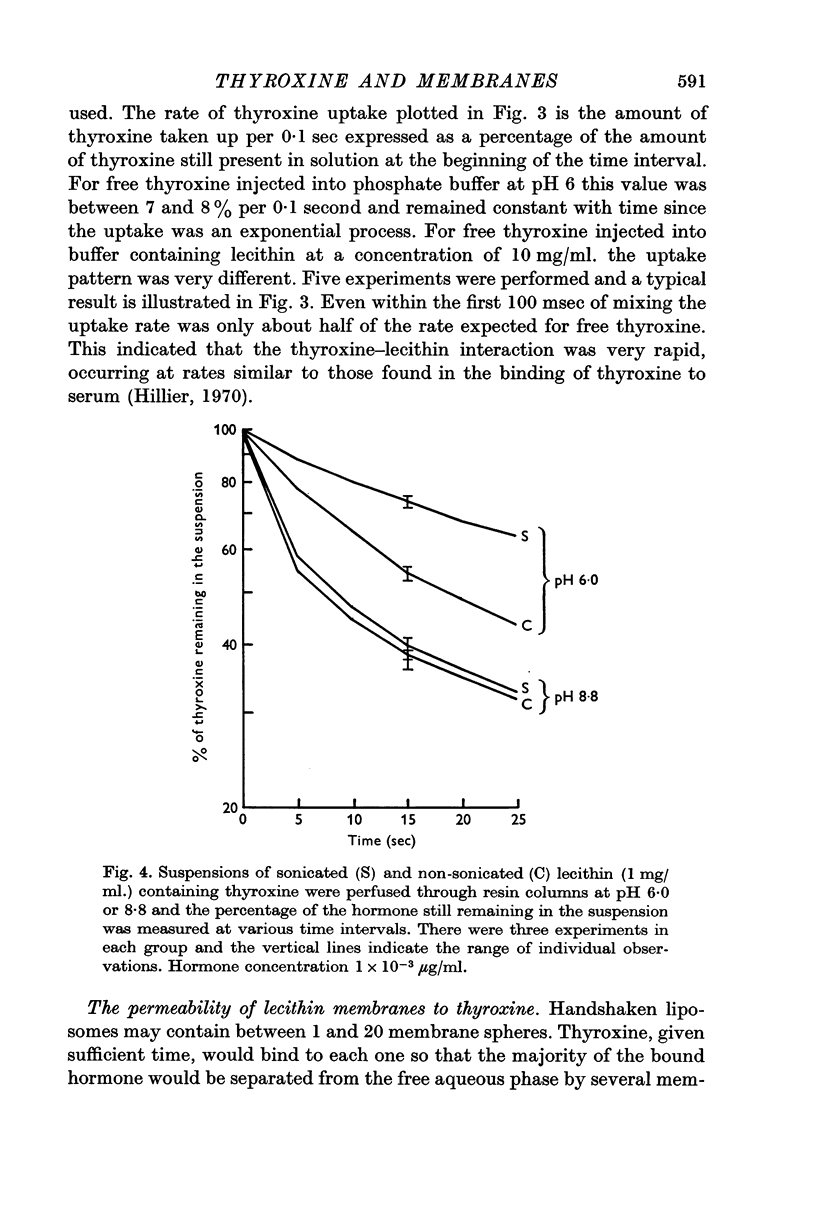
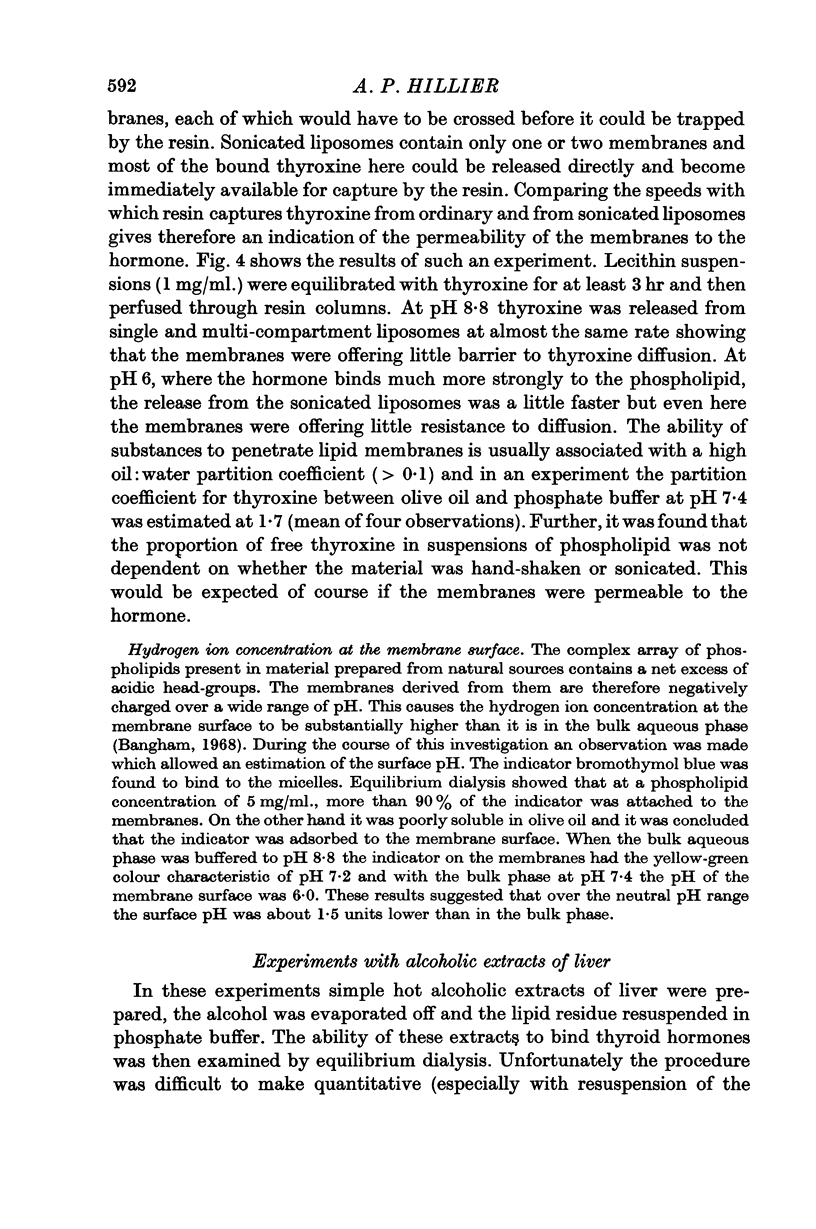
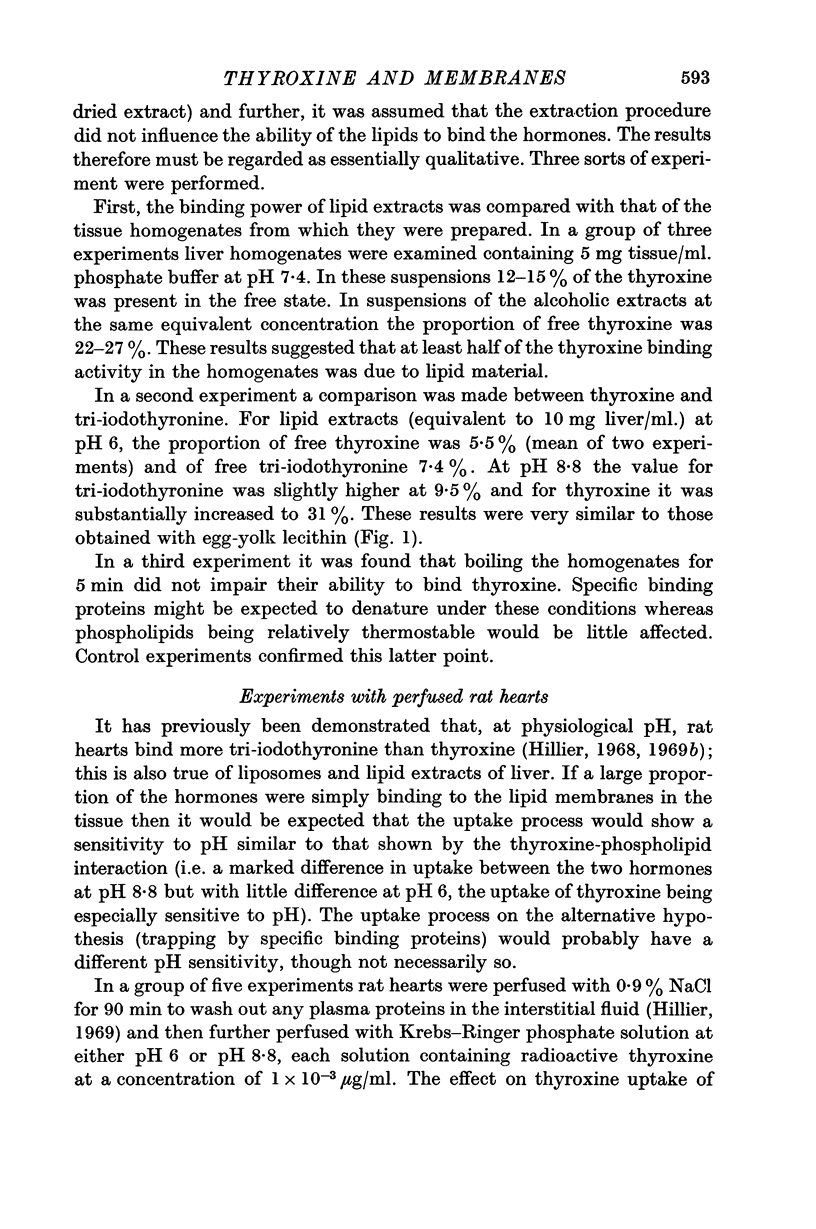
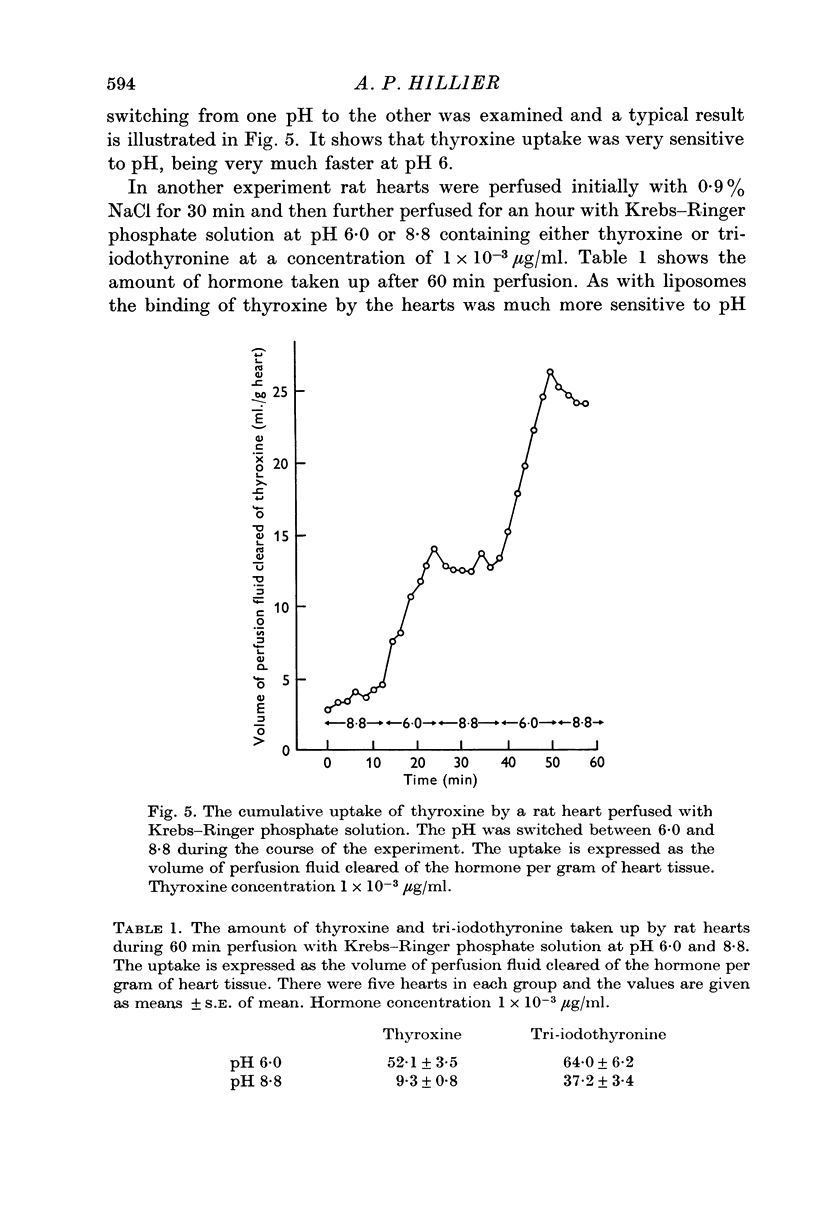
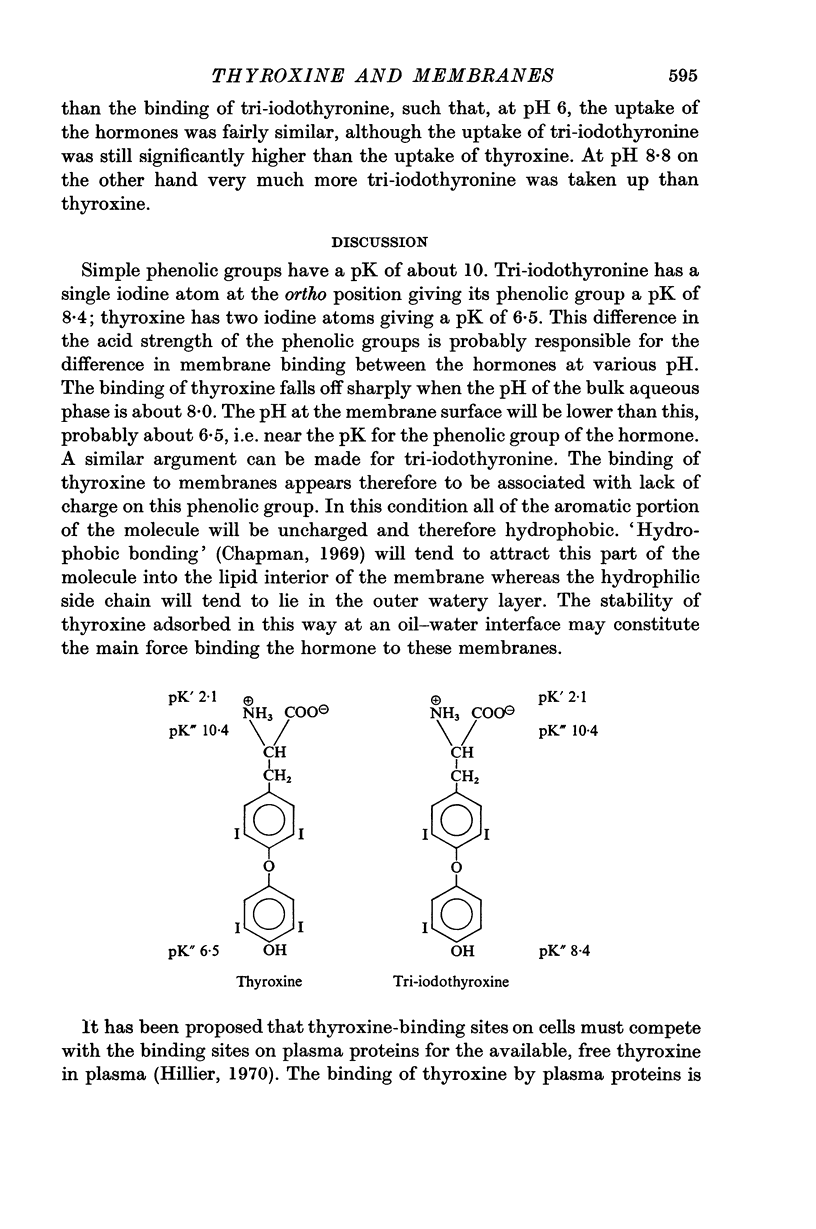
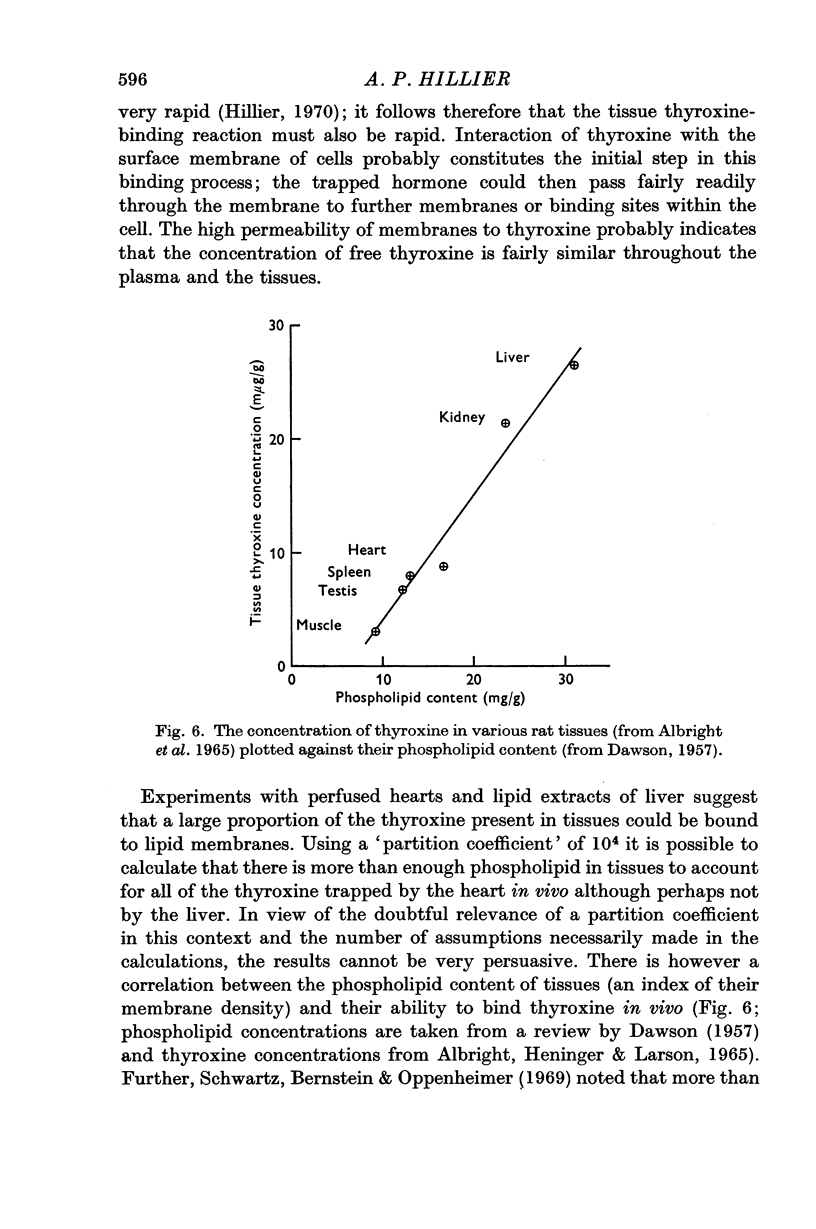
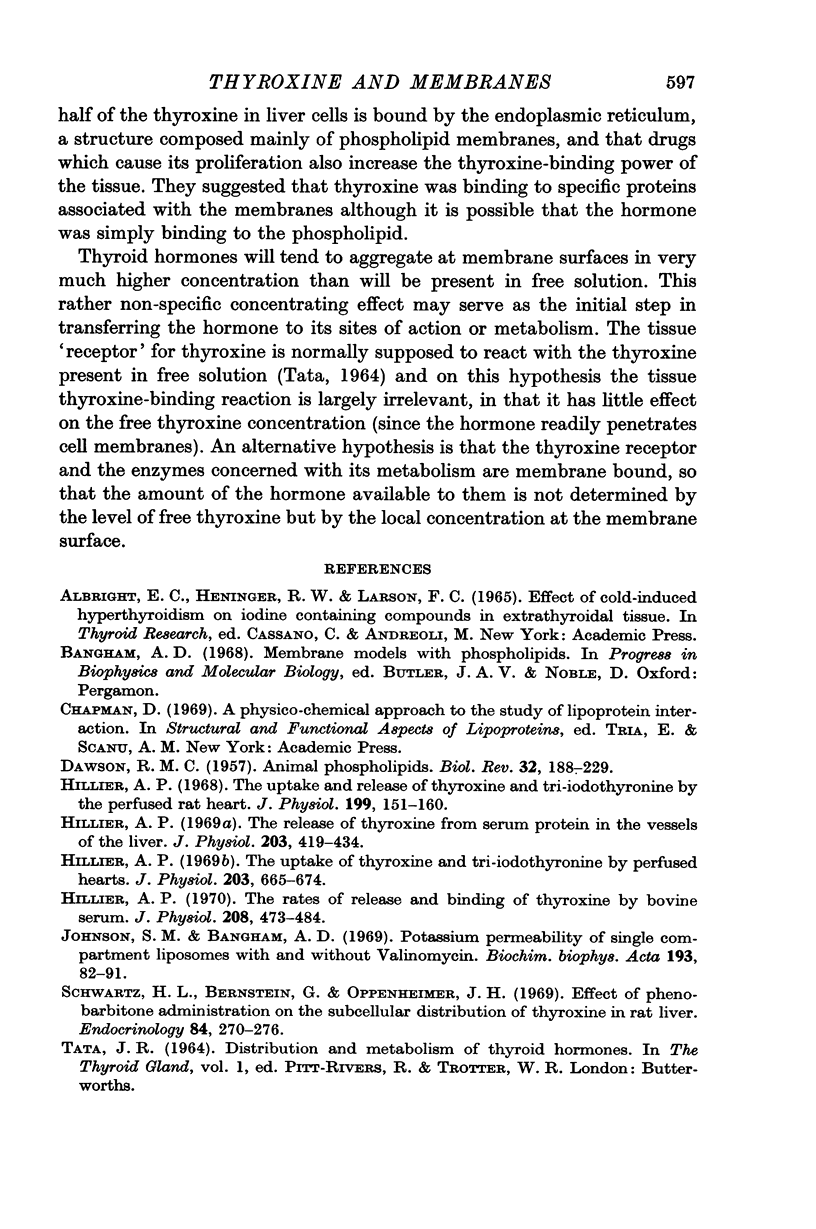
Selected References
These references are in PubMed. This may not be the complete list of references from this article.
- Hillier A. P. The rates of release and binding of thyroxine by bovine serum. J Physiol. 1970 Jun;208(2):473–483. doi: 10.1113/jphysiol.1970.sp009132. [DOI] [PMC free article] [PubMed] [Google Scholar]
- Hillier A. P. The release of thyroxine from serum protein in the vessels of the liver. J Physiol. 1969 Aug;203(2):419–434. doi: 10.1113/jphysiol.1969.sp008872. [DOI] [PMC free article] [PubMed] [Google Scholar]
- Hillier A. P. The uptake and release of thyroxine and triiodothyronine by the perfused rat heart. J Physiol. 1968 Nov;199(1):151–160. doi: 10.1113/jphysiol.1968.sp008644. [DOI] [PMC free article] [PubMed] [Google Scholar]
- Hillier A. P. The uptake of thyroxine and tri-iodothyronine by perfused hearts. J Physiol. 1969 Aug;203(3):665–674. doi: 10.1113/jphysiol.1969.sp008885. [DOI] [PMC free article] [PubMed] [Google Scholar]
- Johnson S. M., Bangham A. D. Potassium permeability of single compartment liposomes with and without valinomycin. Biochim Biophys Acta. 1969 Oct 14;193(1):82–91. doi: 10.1016/0005-2736(69)90061-3. [DOI] [PubMed] [Google Scholar]
- Schwartz H. L., Bernstein G., Oppenheimer J. H. Effect of phenobarbital administration on the subcellular distribution of 125-I-thyroxine in rat liver: mportance of microsomal binding. Endocrinology. 1969 Feb;84(2):270–276. doi: 10.1210/endo-84-2-270. [DOI] [PubMed] [Google Scholar]


